Arabic Letter Haa: The Arabic script is known for its beauty and complexity, especially because many letters take different forms depending on their position in a word. One important character is the Arabic letter Haa (ح). This letter changes its shape when it appears at the beginning, middle, or end of a word. Learning the different forms of the arabic letter haa is essential for students of Arabic who want to master reading and writing with confidence. This lesson explores each position of the letter with clear explanations and examples.
Learning the Arabic Letter Haa with Fun Activities
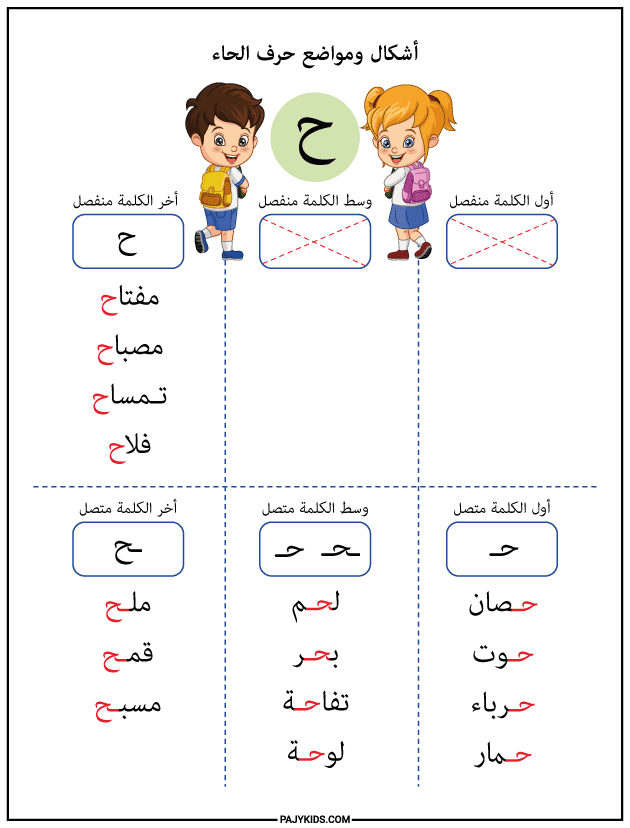
- Initial Form of the Arabic Letter Haa: (حـ)
When the arabic letter haa comes at the beginning of a word, it is written in its initial form: حـ. It connects to the letter that follows it. This form appears in words like حليب (milk) and حقيبة (bag). Recognizing this shape is important for building vocabulary and forming simple words. It also sets the foundation for understanding how Arabic letters flow in cursive writing.
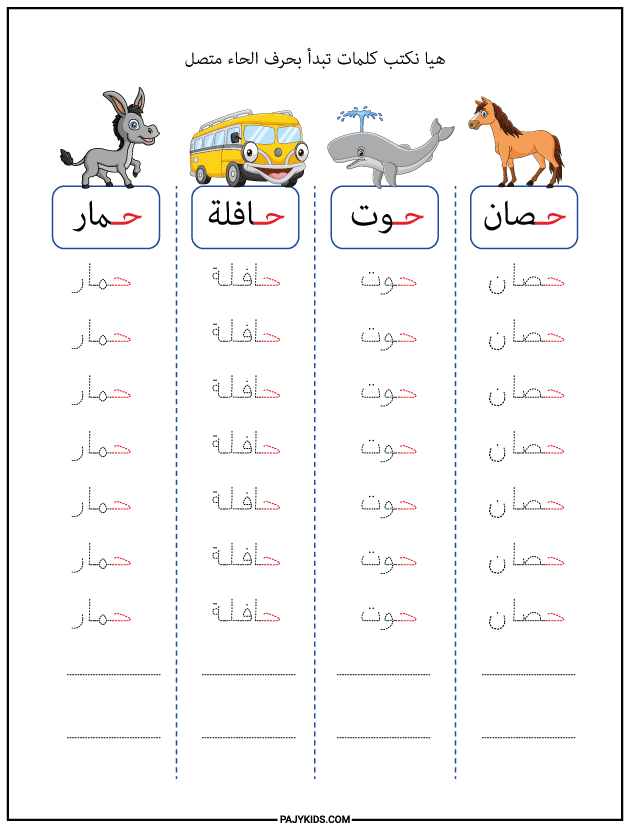
- Medial Form of Haa: (ـحـ)
In the middle of a word, the arabic letter haa takes the medial form: ـحـ, connecting to both the preceding and following letters. Examples include محراب (prayer niche) and بحث (research). Mastery of this form is essential for fluent reading, as most Arabic words contain letters in the middle that need to connect smoothly with others.
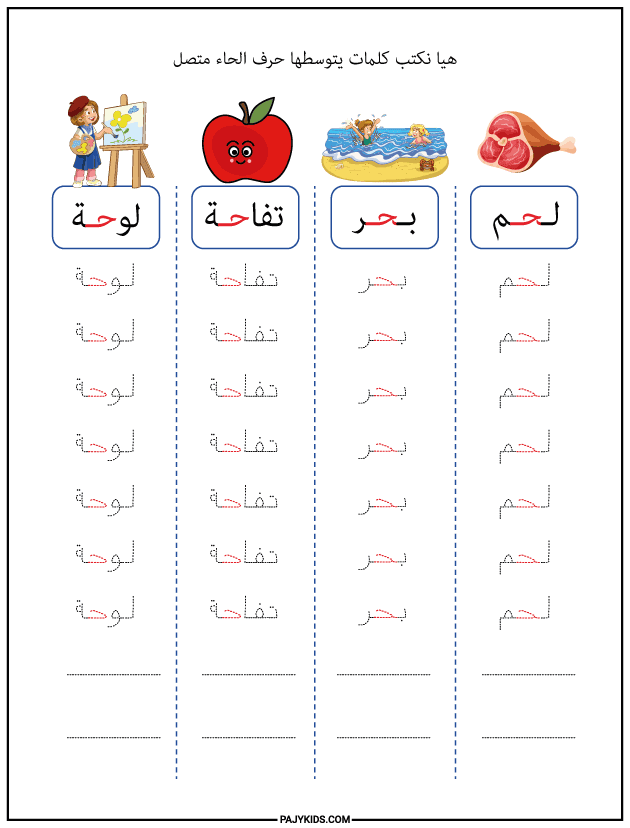
- Final Connected Form of Haa: (ـح)
When Haa appears at the end of a word and is connected to the previous letter, it is written as ـح. You can see this form in words like واضح (clear) and ربح (profit). This final shape often signals the conclusion of a word and is part of learning the flow of Arabic handwriting and script structure.
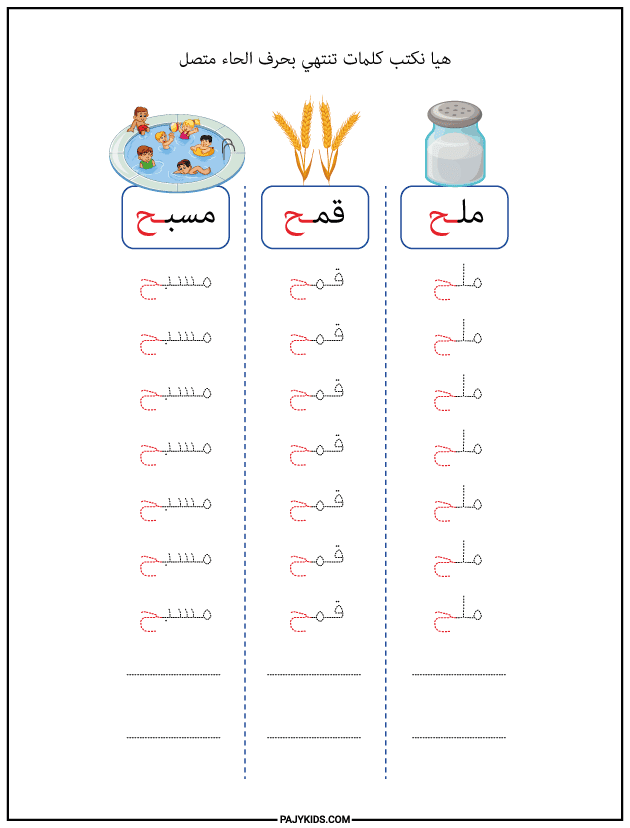
- Isolated Form of Haa: (ح)
In cases where the arabic letter haa stands alone or after a non-connecting letter, it appears in its isolated form: ح. For instance, in words like فلاح (Farmer) or تمساح (Crocodile), Haa does not connect to the previous letter. Understanding this independent shape is essential for recognizing the letter in various contexts, including handwriting, signage, and print.
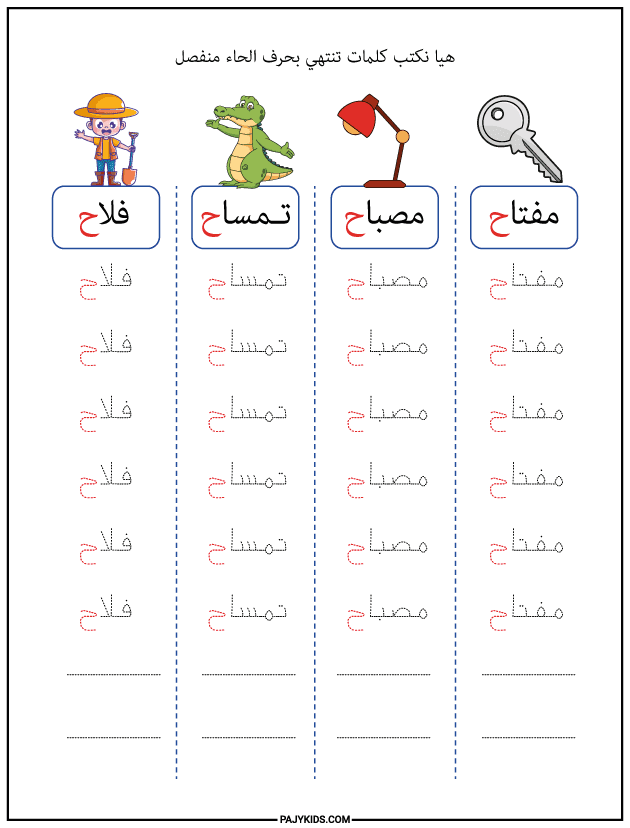
To effectively learn the arabic letter haa in all its forms, students should engage in consistent practice through tracing exercises, flashcards, and word-building activities. Visual aids showing each position clearly can help reinforce memory. Incorporating pronunciation with writing also strengthens the connection between the sound and the form of the letter.